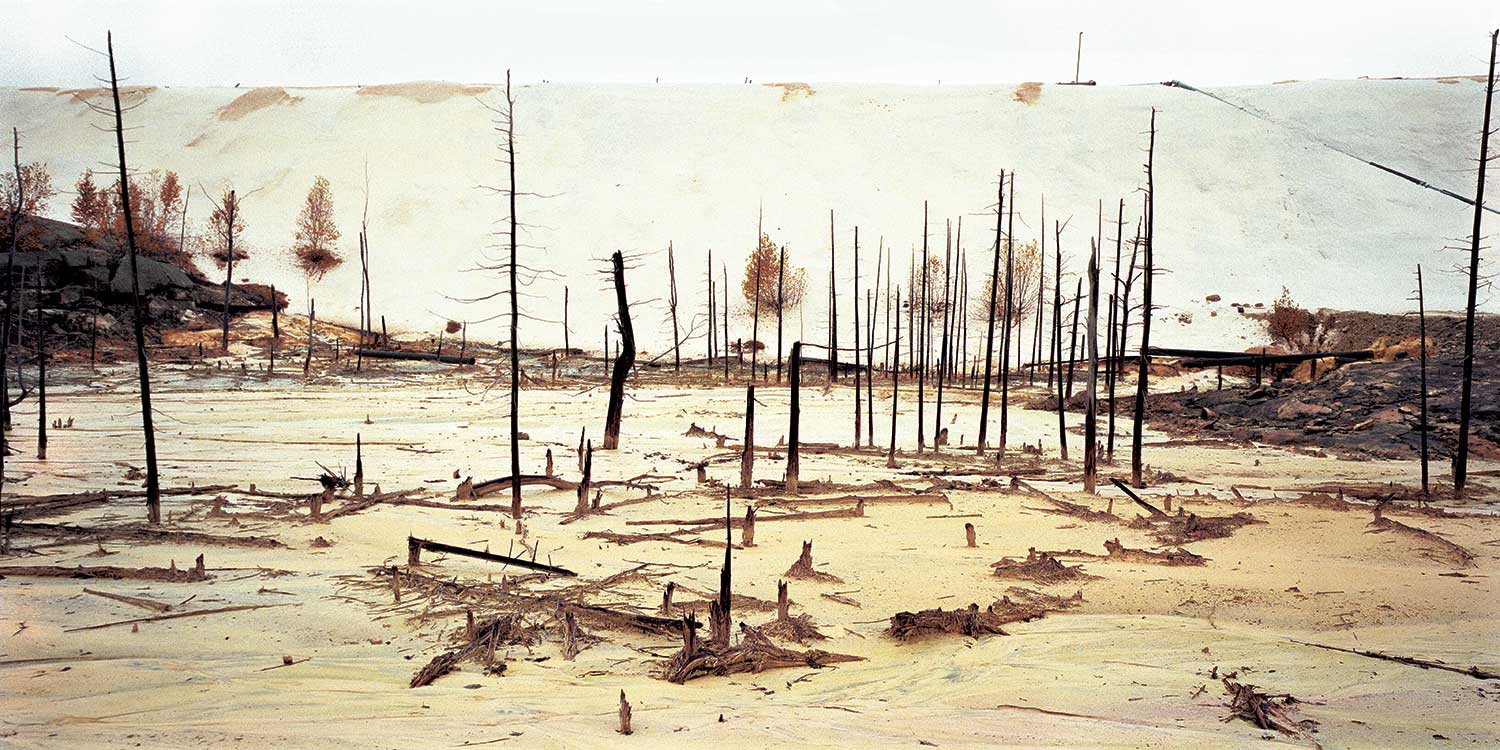In 2001, I travelled with Edward Burtynsky to the beaches of Chittagong, in Bangladesh, where many of the world’s old freighters go to die.
I’d seen Burtynsky’s work in a Toronto gallery the year before, coveting one of his pictures there, of an abandoned stone quarry in Vermont, filled with water the colour of jade. I remember scrutinizing the details of it for several minutes, peering up close, before convincing myself that it was not a painting.
This was Burtynsky’s second trip to Chittagong. On his first trip, briefer than he would have liked, he had photographed the Bangladeshi workers cutting up the ships, some as large as 60,000 tons, with little more than hammers, and acetylene torches – remarkable, Lilliputian, work. Now he had come back to document with more rigour the process of the ships’ slow fragmentation: from complete, seaworthy vessels, beached a half mile out in the mud, to scrap small enough for boys and men to carry away to the waiting trucks which would transport it to Chittagong’s ‘re-rolling mills’, there to be melted and forged into new shapes for the house-building trade. All the fittings, from brass clocks to cornflakes packets, will be taken away and sold.
Carrying a tripod on his shoulder, with a couple of local assistants scurrying after him with gear, Burtynsky looked a solitary figure as he picked a careful path through the monumental sections of freighter standing dismembered on the beach. In the haze of early morning, his best light, he was searching for a suitable vantage point for his large format cameras – wanting, as he has done his whole working life, to record the often mesmerizing situation of man’s industry in nature. He insists there is no moral aspect to his work, and would rather you not call it documentary. He is interested, he says, in the ‘industrial sublime’.
‘I find it extraordinary that something as mundane as a bridge or a chunk of ship on a beach can appear otherworldly as well,’ Burtynsky told me. ‘In my mind, that ambiguity underlines how our society has become disconnected from our industrial roots. We don’t know where our food comes from anymore, where our cars are made, or where our jets get fixed, so a whole part of our experience appears abnormal.’
Edward Burtynsky’s parents, Ukrainian immigrants to Canada, arrived after the Second World War in St Catherine’s Ontario, where Burtynsky’s father found good paying work at the General Motors plant. An amateur photographer, he gave his son his first camera when he was eleven. Burtynsky would use it to photograph machinery when the factory had open days, and his father would take the family to see where he worked.
The Weiland Canal was nearby. Burtynsky would cycle to its banks and barter cigarettes for souvenirs from Polish and Russian sailors who waved from the decks of the enormous ‘lakers’, ships that carried freight through the Saint Lawrence Seaway to the Great Lakes and inland ports in Canada and the United States. Their scale, he says, astonished him. Later, when he was studying at art college in Toronto, he’d come home to photograph the first – and now bypassed and abandoned – Welland Canal, its old locks and industrial detritus. He called his project ‘The Evidence of Man’.
‘It made me think about what happens when man has finished with something, then walks away. There’s a kind of melancholic disintegration there, as nature begins its work of pulling that thing back into the ground. When I’m photographing something in the industrial landscape, I’m looking at whatever is that residual thing.’ Burtynsky went on to photograph quarries in Vermont, railway cuts in Western Canada, rivers of tailings from a Sudbury nickel factory, oil refineries, and packets of densified oil drums and tin cans in the steel-making city of Hamilton. Human activity is in these photographs but it is ghostly, and implied by what isn’t there – the departed stone that has left cubist shapes in the quarries, the food that was once inside the thousands of compressed tin cans. He visited the marble quarries of Carrara in Italy and the oilfields of California and then he found his most ambitious project – China’s Three Gorges Dam and the massive, unprecedented, relocation of whole cities, brick by brick, that its construction has required.
As he worked with his camera in Chittagong, a line of shipbreaking workers walked past us barefoot in the oily muck. Burtynsky pointed out that the beach was rife with toxic waste. He took his shot, packed his camera and then, in passing, he told me that his father had died of cancer, aged forty-six. He died, as a number of GM workers did, Burtynsky said, because he spent his days in a plant where he was exposed to cancer-causing polychlorinated byphenyls. ‘Already I’ve lived longer than my father has,’ he said.
Noah Richler






















